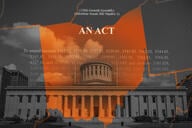You have /5 articles left.
Sign up for a free account or log in.

Community college leaders worry part-time students will stop out if their aid is reduced or they lose access to Pell Grants under the House’s budget bill.
Photo illustration by Justin Morrison/Inside Higher Ed | PixelsEffect and Wolterk/iStock/Getty Images | xavierarnau/E+/Getty Images | Nout Gons/pexels
The House budget bill passed in May threatens to bring major changes to federal financial aid for low-income students—and community colleges are bracing for impact. If the One Big Beautiful Bill Act goes into effect as is, community college leaders expect hundreds of thousands of students to lose their Pell Grants, causing enrollments to plummet. They’re hoping the Senate rejects proposed changes to the program.
While the reconciliation bill promises to dole out about $10.5 billion over three years to the Pell program, addressing a $2.7 billion shortfall, it also limits eligibility, dealing a blow to part-time students, who make up more than two-thirds of community college enrollees nationwide.
The reconciliation bill would increase the amount of coursework required for students to get the maximum Pell Grant, from 24 to 30 credits per year, or 15 credits per semester. More than half of all students currently enrolled in higher ed institutions across the country would fall short of a full course load and see their grants shrink under the House’s proposal, the Congressional Budget Office estimated.
In a more drastic change, the budget also seeks to eliminate Pell Grants entirely for students attending college less than half-time. Under the bill, students would need to enroll in at least 7.5 credits per semester or 15 credits per year to continue receiving Pell. That’s a departure from the way Pell works now: Grants are currently prorated, meaning full-time students are eligible for the maximum amount, $7,395, while students taking fewer credits get a lower Pell award but are not required to take a minimum number of credits.
With the proposed changes, many students would see their aid reduced or lost; a Center for American Progress report estimates those total numbers could be as high as three million and 1.2 million, respectively. And community colleges, which mostly enroll part-time students, would be hit especially hard. At least 20 percent of Pell recipients at community colleges, roughly 400,000 students per year, would lose Pell altogether, according to a letter from the American Association of Community Colleges to the Senate Health, Education, Labor and Pensions Committee. And that’s a conservative estimate, said David Baime, the senior vice president for government relations at AACC.
“If implemented as passed by the House … it would make it extremely difficult for thousands of working students to continue to enroll in community college,” Baime said. “There is a very real concern about students stopping out, because we are, by definition, talking about the lowest-income students on our campuses.”
Proponents of the provision argue the changes are financially necessary and students perform better academically and graduate more quickly when they enroll full-time.
“Pell is currently facing a shortfall of billions that would result in inevitable cuts across the board without fiscal reforms,” Chairman of the House Education and Workforce Committee Tim Walberg wrote in a statement to Inside Higher Ed. “Pell students also often don’t complete their programs and fail to leave with a meaningful credential to show employers.” He argued that Pell Grants for short-term programs, also in the bill, would help students, including at community colleges, “quickly learn the skills needed to succeed in competitive industries.”
But Baime emphasized that students who enroll less than half-time often do so because they’re working long hours to scrape by and juggling other responsibilities.
Upping their course loads to secure more Pell dollars—or to regain Pell eligibility—isn’t a realistic option for many of them, he said. And if these students can’t afford to earn a degree at a community college without Pell, they “have no other higher education alternative. There is no less expensive, more accessible option for these students. Period.”
At Northern Essex Community College in Massachusetts, half of the students are Pell-eligible and 78 percent attend part-time. Lane A. Glenn, the college’s president, estimated that 3,000 students—more than half the student body—would be affected by the policy shift, with roughly five million aid dollars lost. He worries they may be “driven away” by the policy shift and stop out.
“We as a nation are faced with this decision,” Glenn said. “Do we want to provide flexible, more affordable pathways for everybody to get the credentialing that employers say they need? Or do we want to take a hard position and say, ‘If you can’t make it as a full-time student, we’re not going to help you?’ That’s a harsh, harsh decision, and I don’t think most people realize that’s the decision we’re being faced with.”
Institutions in Trouble
The proposed changes to Pell could have an outsize impact not only on community college students but also on their institutions.
If the House budget went into effect, and Northern Essex’s enrollment dropped as badly as Glenn believes it would, “we’re closing buildings, we’re laying off staff, we’re reducing the number of degrees available,” he said. “It would completely change how we operate.”
Already, the college has slowed its hiring and level-funded next year’s budget to prepare for an uncertain funding landscape.
Glenn also worries the potential cuts to students’ Pell Grants could pose an existential threat for free college programs across the country, which allow students to attend community college tuition-free. Many of these offerings are last-dollar programs, meaning the state covers what’s left of tuition after Pell and other forms of aid are applied.
“Most, if not all, of those free college programs would be in danger,” he said.
With fewer Pell dollars coming in, states likely couldn’t afford to keep such programs running, Glenn said. He added that many of the programs, including his state’s, MassReconnect, already lack adequate resources for institutions to support their students.
As Massachusetts lawmakers hash out their fiscal year 2026 budget, there appear to be “no new dollars in next year’s [state] budget for the colleges to provide services to the influx of students we’re seeing, let alone an extra $80 million to plug the hole if Pell Grants went away,” he said. “It’s just not going to happen.”
He emphasized that many institutional scholarships are also last-dollar. They rely on Pell Grants to pay students’ tuition so that scholarship money can go toward food, housing, textbooks, transportation and other costs. He worries students are going to struggle to cover those additional expenses.
A Hazy Path Forward
Adding to their anxieties, higher ed leaders and experts say they don’t fully grasp how the proposed changes to Pell would actually work based on the language of the bill.
Initially, the wording sowed widespread confusion about whether the bill defined a half-time student as taking six credits, the current definition, or 7.5 credits based on the new threshold for a full-time student.
MorraLee Keller, senior consultant at the National College Attainment Network, said based on conversations with officials involved in the writing of the bill, it seems 7.5 credits is correct—but other details remain murky.
For example, Pell Grants are currently disbursed per semester based on the number of credits a student is enrolled in for the current term. But under the reconciliation bill, as Keller understands it, a student retains Pell eligibility if they take 15 credits over the course of a full academic year, including summer term; a full-time student must take 30 credits over that period to qualify for maximum Pell. But how students divide up their credits could vary widely, and students regularly drop and add courses over the course of an academic year, which could shift their Pell eligibility, she said.
Keller worries the policy as proposed would be “nearly impossible” for financial aid officials to administer. She also highlighted idiosyncrasies, including that a full-time student is still defined as taking 12 hours per semester for the purpose of federal student loans, so it appears a student could qualify for the maximum loan but not a maximum Pell Grant.
“It’s very, very confusing” for students and campus officials alike, Keller said. The proposed changes to Pell would need “a lot of guidelines and a lot of clarifying language” because “the way Pell is disbursed now does not align with the philosophy in the House bill.”
Another quirk of the provision is that courses are typically three credits, so if a student wanted to take 7.5 credits per semester—and avoid seeking out rare classes with irregular credit counts or tacking on a summer term—they’d really have to take three courses for a total of nine credits per semester, said Antoinette Flores, director of higher education accountability and quality at New America, a left-wing think tank. So, the threshold for Pell eligibility is arguably even “higher than what is written in the legislation.”
She added that there’s more potential for confusion ahead. To make these changes to Pell possible, the Department of Education would need to update various technology systems, including those that administer the Free Application for Federal Student Aid and control disbursements. That’s not “as easy as flipping a switch,” Flores said—especially given that the department, decimated by staff cuts, could be responsible for implementing other major changes in the reconciliation bill, including to federal student loans. She worries the error-ridden rollout of last year’s new FAFSA could be followed by another year of turmoil for applicants.
“My concern is that even little changes have the potential to cause chaos,” Flores said.
Some community college leaders hope the Senate will push back on the House’s proposed changes to Pell and they ultimately won’t come to pass.
“We are hopeful that when legislators see the impact that this proposal would have on their local community colleges, they will reassess it,” Baime said.
Glenn agreed that the fate of Pell for part-time students isn’t sealed yet.
“I know how budgets like this come together,” Glenn said. “I know a lot is likely to change. And the optimist in me thinks this isn’t going to happen.”





